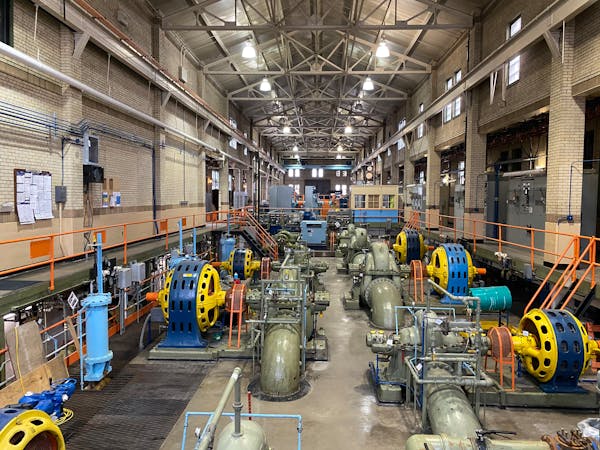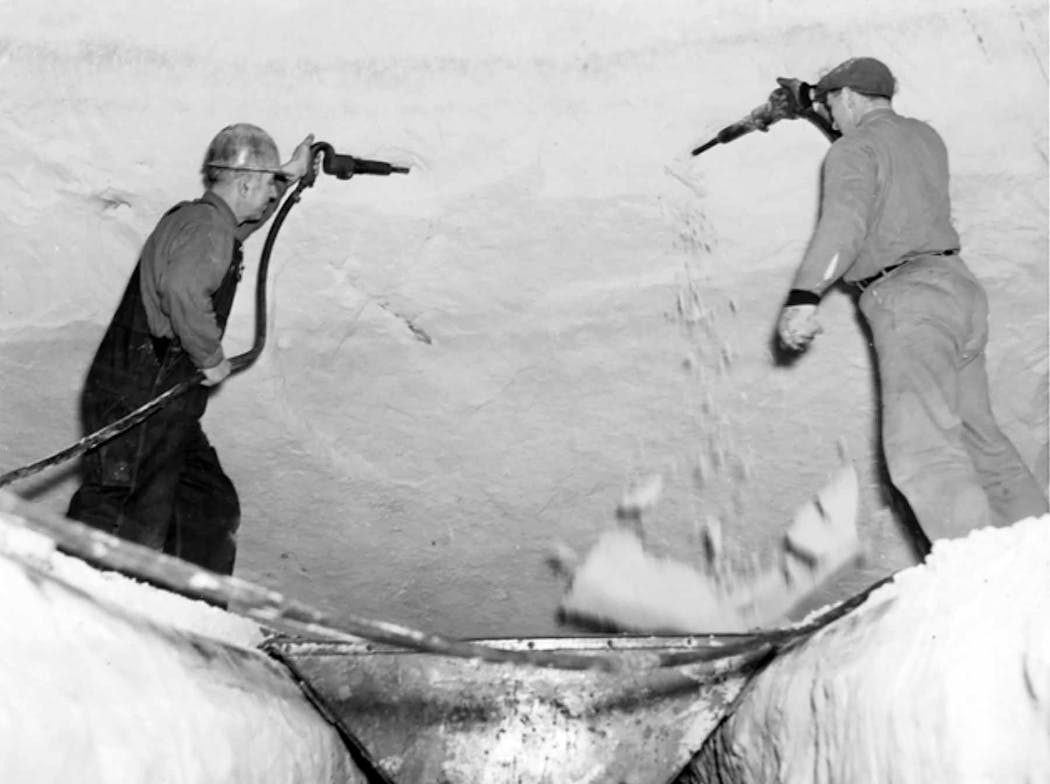Did Ford make millions of windows from sand mined beneath its plant?
Listen and subscribe to our podcast: Via Apple Podcasts | Spotify | Stitcher
Atop the Mississippi River bluffs in St. Paul, workers turned out more than 7 million vehicles at the Ford assembly plant between its opening in 1925 and its closing in 2011.
And for much of that time, they were being undermined by colleagues — literally. Benjamin Schmaus of Brooklyn Park brought the topic to Curious Minnesota, our reader-driven feature that answers questions about life in the North Star state.
"Did Ford Motor Co. really mine sand for the windshields under the Highland Park Ford plant?" Schmaus asked.
In a word: Yes.
Henry Ford, founder of the company, chose the site carefully. Minnesota was a central location and the Mississippi would supply both hydroelectric power and barge transportation.
Meanwhile, the plant was sitting on a mine — not of gold, but of pure, white silica sand, which was not a bad alternative.
The front page of the Minneapolis Sunday Tribune on May 2, 1926, breathlessly announced the commencement of glassmaking operations at the Ford plant. Sand mined from the bluffs under the plant was hauled to the surface and dumped into furnaces burning at more than 2,600 degrees. Molten glass rolled out the other end, then was pulled like taffy and cut into windows for Model Ts, Model As and other Ford cars built at the plant.
Small crews of workers using air-driven chisels and shovels carved the sand loose, eventually creating a network of tunnels that ran for more than 4 miles at the plant and a second mining site off Shepard Road. Railroad tracks were laid in the tunnels for small trolley carts that hauled the sand.
Ford stopped mining and making glass at the plant in 1959. Some of the tunnels were closed off, but others got new life. One tunnel was used to house a University of Minnesota seismographic station to monitor for earthquakes and — during the Cold War — nuclear attacks.
The Shepard Road site later hosted the "Tunnel of Terror," a Halloween fright house run by the St. Paul Jaycees for about 20 years until it closed in 2004.
Schmaus said he remembers going to the Tunnel of Terror. That, and a lifelong interest in mining, prompted his question.
"One of the first things about me is, I've always been interested in mining," he said. "I've read a lot about the Iron Range and the mining there.
"My grandma and I used to go down by the river by the Ford plant, and there are a lot of things you see that you can't get to."
The Substreet blog, which chronicles "history under ground," has a great piece on the Ford sand mines.
Schmaus said he's glad to learn more about the Ford mines, and hopes others will enjoy the answer to his question.
"In Minnesota, it's just interesting to learn about my surroundings," he said.
"It's the need to understand the ways things used to be, and what they did, and why they did it."
If you'd like to submit a Curious Minnesota question, fill out the form below:
Read more Curious Minnesota stories:
Why was I-94 built through St. Paul's Rondo neighborhood?
Why does Minneapolis keep planting trees under power lines?
Why are vehicle tabs more expensive in Minnesota than in other states?
Minneapolis plows its alleyways. Why doesn't St. Paul?
Why is Minnesota the only mainland state with an abundance of wolves?
Why is Minnesota more liberal than its neighboring states?





